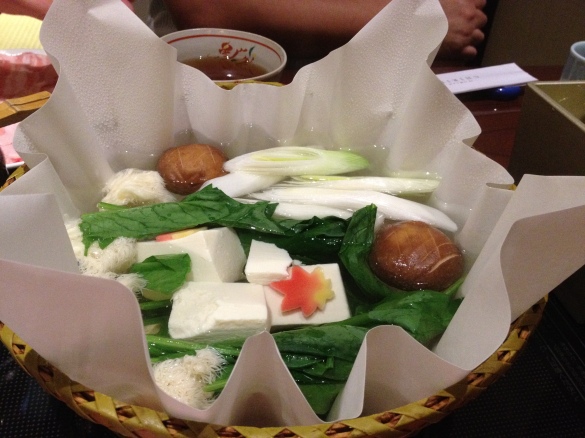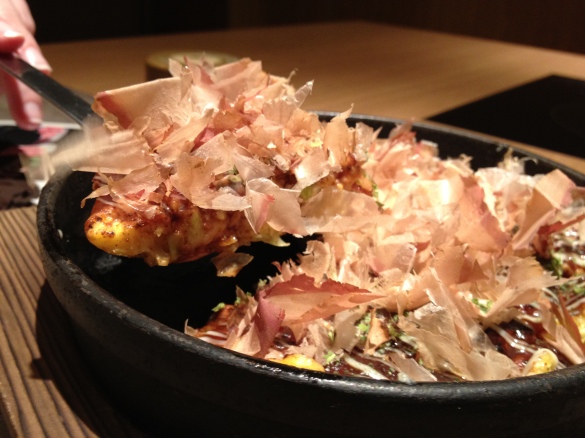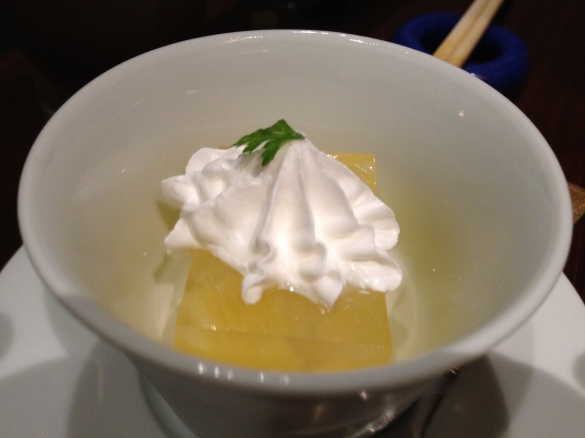 We’re deep into autumn here in Tokyo, which means it’s the ideal season for shabu shabu — Japanese-style do-it-yourself hotpot. One might think that there isn’t much variation to something as simple and straightforward as boiled meat and vegetables, but I recently learned that there are indeed some regional differences in shabu shabu.
We’re deep into autumn here in Tokyo, which means it’s the ideal season for shabu shabu — Japanese-style do-it-yourself hotpot. One might think that there isn’t much variation to something as simple and straightforward as boiled meat and vegetables, but I recently learned that there are indeed some regional differences in shabu shabu.
The concept of hotpot, where people gather around the pot and cook a small portion of food at a time instead of dumping it all in as a stew, appears to have originated in Mongolia and spread to China over 1000 years ago. There are a variety of regional styles of hotpot in China alone, and many more in Southeast Asia.
Standard Japanese shabu shabu entails cooking food in a broth flavored with konbu (kelp). Interestingly, shabu shabu itself has only been around since the early 20th century despite the existence of nabe stews and sukiyaki. Perhaps this might be correlated with the greater exposure to Chinese and other foreign cuisines during the Meiji era, when Japan opened up to the world and modernized. The name “shabu shabu” refers to the sound of meat moving back and forth in the broth to cook — like “swish swish.”
I had a typical example of shabu shabu recently at a restaurant called Shikinanakusa (四季七草) in the Roppongi district of Tokyo. Their broth included konbu and, in a slight deviation from the norm, dried scallops. The food consisted of thin sliced meat (usually pork or beef; I ordered prok) that cooks quickly in the broth, an assortment of vegetables, noodles, and tofu. You have a choice of dipping the food in either a spicy sesame (goma) sauce or in ponzu (yuzu flavored soy sauce). And as a starter, I was given a piece of gelatinous but very delicious tofu, topped with a sweet sauce and some wasabi.
I happened to order a dinner set that included okonomiyaki, which is like a savory Japanese egg pancake usually chocked with an assortment of vegetables, meat and/or seafood, and sometimes noodles. It’s also normally topped with a thick Worcestershire-like sauce, sweet Japanese mayonnaise, ground seaweed, and bonito flakes (katsuobushi). The okonomiyaki at Shikinanakusa was still hot and steaming when it arrived at the table, which caused the light and delicate bonito flakes to wave gently into the air. It was really an awesome thing to watch.
So, that’s standard shabu shabu. But the story doesn’t end there.
Around the same time that I made my trip to Shikinanakusa, my friend BT introduced me to Kyoto-style shabu shabu at a restaurant called Chiriri (ちりり). In the Kyoto version, you simply boil your food in water and dip your food in tsuyu, a dipping sauce made of soy sauce and a fish stock (dashi), made of kombu and bonito. You also add (perhaps “dump” is a better word) a lot chopped green onions into the sauce for additional flavor and texture.
BT pointed out that the cuisine of the Kansai area, in which Kyoto and Osaka is located, puts particular emphasis on the high quality of their region’s dashi. So the tsuyu has an excellent flavor, and provides a sweeter and lighter soy taste than what you find in standard shabu shabu.
The pork at Chiriri is particularly notable because it is sliced paper thin — thinner than at most other shabu shabu places. This means that the pork crinkles at the edges after you’ve flashed cooked them in water. In fact, the crinkling is what the term “chiriri” refers to.
Among the vegetables that came with our meal was an odd looking mushroom called yamabushitake (山伏茸), which literally means “mountain priest mushroom.” It is also known as “monkey head mushroom” in Chinese. It looks rather hairy and perhaps unappetizing, but it actually has a nice texture after being cooked in the water.
Also interesting is the “pot” that the food is cooked in at Chiriri. It’s actually made of paper, folded into a bowl shape around a straw basket, with a round piece of metal at the bottom. The heat is ingeniously provided by an induction cooker which cooks the food without burning the paper pot.
To close out the meal, Chiriri gave us a very delicious dessert of yuzu jelly topped with whipped cream.
Both Shikinankusa and Chiriri have upscale interiors and offer private rooms, making them great places to take small and large groups. In fact, that’s probably been one of the key attractions of hotpot since its invention over a thousand years ago — huddling around a warm pot on a cold night with family and friends, chatting, and enjoying each other’s company. And, of course, cooking and eating wonderful food.
Shikinanakusa Location: 1-6-1 Roppondi, Minato-ku, Tokyo (Izumi Garden Tower, 2nd Floor) Business Hours: Monday – Friday: Lunch: 11:30am – 3:30pm, Dinner: 5:00 – 11:00pm; Saturday, Sunday & Holiday: 11:30am – 10:00pm Getting There: Take the Tokyo Metro Nanboku Line to Roppongi-itchome station.











That is some beautiful shabu shabu. I especially like those momiji shaped things. Are they kamaboko?
LikeLike
That’s a good question. We think they might be kamaboko, but they were much softer than any that I have had before. Another possibility is that it is some kind of gluten made out of wheat or other ingredient. But yeah, they add some beautiful detail to the tofu and the vegetables in general.
LikeLike